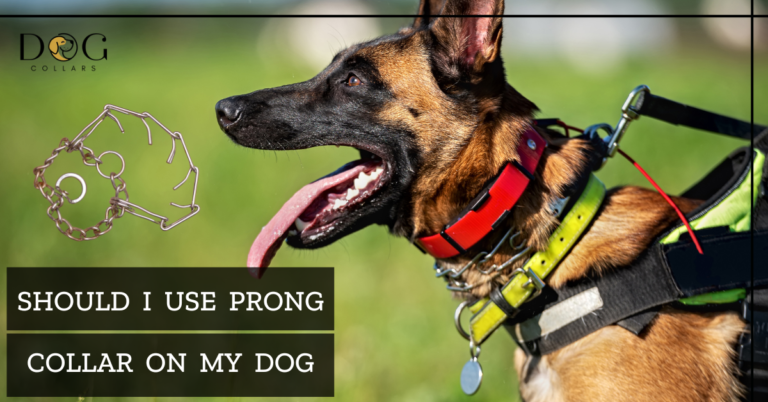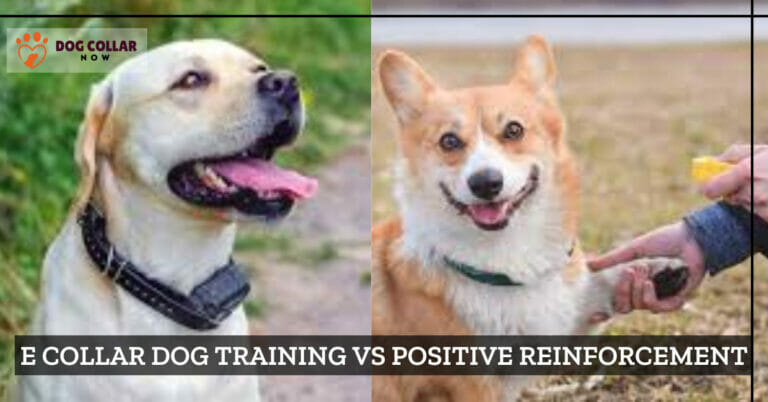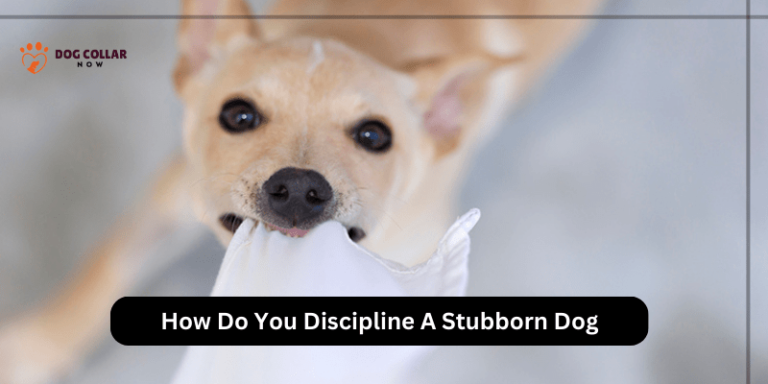How To Stop Dog From Biting Other Dogs Legs – 5 Simple Techniques

Attention, dog lovers! Is your furry friend becoming a leg-biting enthusiast during playtime? It’s time to curb this behavior and restore harmony to the doggy playground!
To stop a dog from biting other dogs’ legs, closely supervise interactions, redirect their attention, teach obedience commands, socialize gradually, use positive reinforcement, and seek professional help if needed.
Throughout this piece, we will explore the different types of dog bites and provide tips on how to stop dog from biting other dogs.
Let’s get started!
How To Stop Dog From Biting Other Dogs Legs – Guide
If your dog is biting other dogs’ legs during playtime, it’s important to address the behavior as soon as possible.
Understand the reasons
It’s important to identify why your dog is engaging in this behavior. It could be due to fear, anxiety, possessiveness, or a lack of socialization. Understanding the root cause will help you develop a tailored approach to address it.
Positive reinforcement training
Train your dog using positive reinforcement techniques. Reward them with treats, praise, and affection when they display appropriate behavior and refrain from biting other dogs’ legs. Consistency and patience are key here!
Socialization
Expose your dog to various social situations and other friendly dogs. Gradually introduce controlled interactions, reward good behavior, and provide distractions or redirections when necessary. This will help your dog develop positive associations and learn proper play etiquette.
Manage the environment
During playtime or encounters with other dogs, keep a close eye on your dog’s behavior. If you notice signs of agitation or tension, intervene early by redirecting their focus to an appropriate toy or activity. This will help prevent the potential for leg biting.
Seek professional help if needed
If the problem persists or escalates, don’t hesitate to consult a professional dog trainer or behaviorist. They can provide specialized guidance and techniques to address the specific needs of your dog.
Stopping from biting other dogs’ legs takes patience and persistence. With proper socialization, supervision, redirection techniques, and consistent dog training methods. You can successfully train your furry friend not to nip at other canine companions!
Why Do Dogs Bite Other Dog’s Legs – Reasons
Ever wondered why dogs bite each other’s legs? Well, there are a few reasons behind this behavior.
- Sometimes, it’s just playful fun! Dogs use their mouths to explore and interact, they bite legs to play with other dogs, it can be a part of their playtime. It’s like their way of saying, “Let’s have some fun!
- But be aware, not all leg biting is harmless. In some cases, it can indicate aggression or fear. If a dog bites another dog’s legs forcefully or repeatedly, it’s important to step in and assess the situation to ensure everyone’s safety.
- Understanding why dogs bite their legs helps us interpret their behavior. Whether it’s playful or not, it’s crucial to keep an eye on their interactions and provide proper training and socialization. This ensures a safe and happy environment for all the dogs involved.
- Other reason why dogs may bite each other’s legs is due to fear or anxiety. A fearful dog may resort to this behavior as a way to protect itself from perceived threats or assert dominance over another dog.
- Medical issues can also be a cause of leg-biting in dogs. Pain from an injury or arthritis could make them lash out at their fellow canine companions.
It’s important for pet owners to observe their pup’s body language when interacting with other dogs and understand the underlying causes behind any negative behaviors displayed by their furry friends.
The Different Types of Dog Bites
Dog bites can occur for various reasons, and each type of bite has its own unique characteristics. It is essential to understand the different types of dog bites to identify whether your dog’s behavior is playful or aggressive.
- The initial form of biting is a playful nip. This occurs during playtime and shows that your pet enjoys interacting with other dogs. The nip may be accompanied by wagging tails, relaxed body language, and vocalization.
- Alternative type of bite is an exploratory nibble where a young puppy learns about his environment by using his mouth as he would use his hands. These bites are not meant to harm but rather to explore objects in their surroundings.
- This type of biting occurs when dogs become fearful or threatened by another dog’s presence, leading them to react aggressively toward the perceived threat. In such instances, they will show warning signs through growling and standing tall while showing teeth before attacking.
- Some breeds tend to display assertive actions due to their genetic tendencies or past experiences which have led them down this path.
Understanding these different types of bites helps you know how best to train your canine friend not only on how they interact with other dogs but also how it interacts with humans around them.
How Do You Tell If A Dog Is Playing Or Fighting When Biting Legs?
Distinguishing between playful and aggressive leg biting in dogs can be challenging. To ensure a safe environment, it’s crucial to understand the difference.
During playtime, look for relaxed facial expressions, wagging tails, and gentle nips to indicate friendly play. Aggression is characterized by tense muscles, ears pinned back, intense focus, and potential growling or snarling.
Consistent targeting without breaks or reciprocation suggests domination rather than playful interaction. Pay attention to these signs to differentiate between harmless fun and potential aggression.
Signs Of Playful Leg Biting
When dogs play with each other, they often engage in playful nipping and biting. This is completely normal behavior for dogs that love to interact with other canines. However, it’s important to be able to distinguish between playful leg biting and offensive behavior.
- Growling: One sign of playful leg biting is the absence of growling or snarling. If your dog is happily wagging their tail while engaging in this behavior, then there’s a good chance they’re just playing around.
- Body Language: The other indication of playful leg biting is the body language of both dogs involved. Playful bites are usually accompanied by loose and relaxed body postures. Whereas aggressive bites tend to be more rigid and tense.
- Gentle Mouthing: If your dog engages in gentle mouthing or nibbling during play and takes turns or breaks while interacting with another dog, it’s likely harmless playtime with no intention to harm.
Understanding the signs of playful leg biting can help ensure that your pup has safe interactions with other furry friends!
Signs Of Aggressive Leg Biting
Aggressive leg biting is a serious issue that pet owners need to address immediately. It’s important to distinguish between playful and offensive behavior, so you can take the necessary steps in correcting it.
- Shows Teeth: A clear indication of aggressive leg biting is when your dog displays growling or bares its teeth during the behavior. This indicates that your pet may be experiencing some form of aggression towards other dogs and needs immediate attention.
- Dog Sniffs: Alternative sign is if your dog stiffens up when another dog approaches. This means they are feeling threatened and might resort to biting as their way of protecting themselves from what they perceive as danger.
- Lunge at other dogs: If you notice that your furry friend tends to lunge at other dogs before nipping at their legs, this could also be a sign of an underlying problem with aggression. In this case, it’s best to seek professional help from a trainer or veterinarian who specializes in animal behavior.
It’s essential for pet owners not to ignore these warning signs as the longer they go unchecked, the more severe behavioral issues can become. Addressing them promptly will ensure both your and your furry friend’s safety during interactions with other dogs.
How to Train Your Dog Not to Bite
When it comes to training your dog not to bite, there are a few key steps you can take.
- Make sure your dog understands that biting is not acceptable behavior. This means setting clear boundaries and consistently enforcing them.
- One effective technique is to use positive reinforcement. Reward your dog with treats, praise, or playtime when they exhibit good behavior and refrain from biting.
- Consistency is key here – make sure everyone in the household knows the rules so that your dog receives consistent feedback.
- If your dog does start biting during playtime or interaction with other dogs, interrupt the behavior immediately by saying “no” firmly and redirecting their attention to an appropriate toy or activity. Over time, this will help them associate biting with negative consequences.
- It’s also important to socialize your puppy early on so that they learn how to interact appropriately with other dogs without resorting to aggressive behaviors like biting.
- Enroll in puppy classes or arrange playdates with friendly dogs under supervision.
Remember that training takes time and patience – don’t expect overnight results! With consistency and dedication, you can teach your furry friend how to interact safely and happily in any situation
What to Do If Your Dog Does Bite – How to treat
If your dog has bitten another dog, it’s important to take immediate action.
- The starting point is to separate the dogs and assess any injuries that may have occurred. If the bite was severe, seek veterinary attention right away.
- Later, you should address any underlying behavioral issues that may have led to the biting incident. This can be done through proper training and socialization techniques.
- It’s also important to manage your dog’s interactions with other dogs in the future. This may mean avoiding certain situations or keeping them on a leash when around other pets.
- In some cases, medication or professional intervention may be necessary to help your pet overcome aggressive tendencies and prevent future biting incidents.
- Remember that every situation is unique, so it’s important to work closely with a veterinarian or animal behavior specialist for guidance and support throughout this process.
By taking proactive steps and addressing any issues early on, you can help ensure a safe and happy environment for both your pet and those around them.
Conclusion
Leg biting in dogs can occur for various reasons, either as playful or aggressive behavior depending on the dog’s breed and personality. It’s crucial for pet owners to closely monitor their dogs during playtime with other dogs and learn to distinguish between playful nipping and aggression.
Consistent training and seeking professional help, if needed, can prevent leg biting. Early socialization of puppies reduces the risk of future aggression. Providing exercise, mental stimulation, affection, and positive reinforcement training promotes well-behaved dogs who interact well with others.
FAQs
Why is my dog biting my other dog’s leg?
Possible reasons include playfulness, seeking attention, establishing dominance, or resource guarding. It’s important to observe their behavior and consult with a professional if needed.
How do I get my puppy to stop biting my other dog’s legs?
Provide proper socialization and training for your puppy, redirect their attention to appropriate toys, and discourage the behavior with consistent correction and positive reinforcement.
Why does my dog bite other dogs’ feet?
Dogs may bite other dogs’ feet for various reasons, such as playfulness, herding instincts, or asserting dominance. Understanding their behavior and addressing any underlying issues can help prevent this behavior.
How do I get my dog to stop play biting my other dog?
Use positive reinforcement training to redirect your dog’s behavior towards appropriate toys or activities. Provide consistent correction, discourage rough play, and encourage calm interactions.
Should you punish your dog for biting another dog?
Punishment is not recommended as it can lead to fear, aggression, or other behavioral problems. Focus on positive reinforcement, training, and managing the environment to prevent and address any issues.
How do I teach my dog to play gently with other dogs?
Gradually introduce your dog to other dogs and monitor their interactions. Use positive reinforcement to reward gentle play and discourage rough behavior. Professional training and socialization can also be beneficial.
Is it too late to socialize a dog?
It is never too late to socialize with a dog. While it may require more time and patience, dogs of any age can benefit from socialization.






